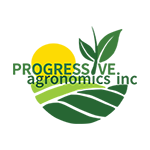For many of the most frequently applied nutrients, broadcast applications on the soil surface are often the most common method of application. However, in some areas, deep banding of fertilizer is gaining popularity. The placement of deep banded fertilizer is 5-8 inches below the soil surface in a highly concentrated band. Often, producers will utilize GPS guidance to plant directly over these highly concentrated bands of nutrients.
Different types and forms of nutrients behave differently in the soil, and consequently, the ideal method of fertilizer applications vary from one nutrient to the next. In addition, some forms of nutrients need to be applied below the soil surface to minimize loss, while other forms of nutrients are not mobile in the soil. Nutrients that are not mobile in the soil can be more difficult for plants to take up as they must reach the root through either root interception or diffusion. Both root interception and diffusion require the roots to be in relatively close proximity to the nutrient. Therefore, plant uptake of nutrients with limited soil mobility is more efficient when placed directly in the root zone. This is where the deep banded fertilizer applications are often focused. Nutrients that are mobile in the soil can more readily move with the water in the soil, termed mass flow, to plant roots, making placement less critical.
When discussing nutrient application, we often refer to the 4Rs (right product, right place, right time, and right rate). Nutrients like phosphorus and potassium are often the focus of deep placement fertilizer applications, because they are both relatively immobile in the soil and needed in comparatively large amounts. This “right place” placement potentially increases the opportunity of plant roots to encounter this zone of increased nutrition earlier in the growing season. In addition to the quicker interception by roots, the deeper soil placement will increase the likelihood that moisture will be present throughout the growing season to aid in the uptake of nutrients. This is especially important for potassium availability. Increased root proliferation is often observed in areas of high concentration of nitrogen and phosphorus, resulting in a larger overall root mass. One other benefit of placing nutrients, like phosphorus, below the soil surface is it reduces the likelihood of erosion moving the phosphorus into surface water.
I study conducted by the University of Illinois demonstrates the importance of the proximity of the band of fertilizer to the crop row to be planted. This study demonstrates that there may not be a yield advantage over the standard broadcast application in 30 in. rows in you are 9 in. or more away from the band of fertilizer. Deep-banded nutrient applications have the potential to improve the crop’s ability to recover certain nutrients quicker and more efficiently. To maximize the effect, rows should be planted close (<6 in.) to the band of fertilizer left by the deep placement equipment.
~ Pat Holloway, CCA – Field Agronomist

